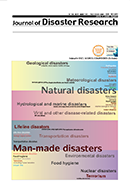17 巻, 7 号
選択された号の論文の9件中1~9を表示しています
- |<
- <
- 1
- >
- >|
Regular Papers
-
原稿種別: Paper
2022 年 17 巻 7 号 p. 1115-1126
発行日: 2022/12/01
公開日: 2022/12/01
PDF形式でダウンロード (1645K) -
原稿種別: Paper
2022 年 17 巻 7 号 p. 1127-1139
発行日: 2022/12/01
公開日: 2022/12/01
PDF形式でダウンロード (14675K) -
原稿種別: Paper
2022 年 17 巻 7 号 p. 1140-1149
発行日: 2022/12/01
公開日: 2022/12/01
PDF形式でダウンロード (2301K) -
原稿種別: Paper
2022 年 17 巻 7 号 p. 1150-1157
発行日: 2022/12/01
公開日: 2022/12/01
PDF形式でダウンロード (602K) -
原稿種別: Letter
2022 年 17 巻 7 号 p. 1158-1164
発行日: 2022/12/01
公開日: 2022/12/01
PDF形式でダウンロード (1311K) -
原稿種別: Paper
2022 年 17 巻 7 号 p. 1165-1182
発行日: 2022/12/01
公開日: 2022/12/01
PDF形式でダウンロード (2457K) -
原稿種別: Review
2022 年 17 巻 7 号 p. 1183-1191
発行日: 2022/12/01
公開日: 2022/12/01
PDF形式でダウンロード (803K) -
原稿種別: Paper
2022 年 17 巻 7 号 p. 1192-1198
発行日: 2022/12/01
公開日: 2022/12/01
PDF形式でダウンロード (278K) -
原稿種別: Paper
2022 年 17 巻 7 号 p. 1199-1205
発行日: 2022/12/01
公開日: 2022/12/01
PDF形式でダウンロード (113K)
- |<
- <
- 1
- >
- >|
